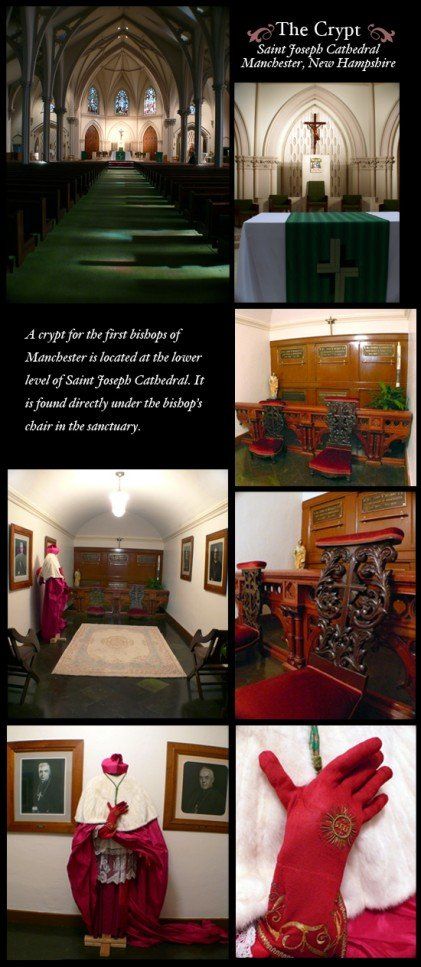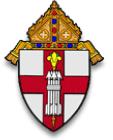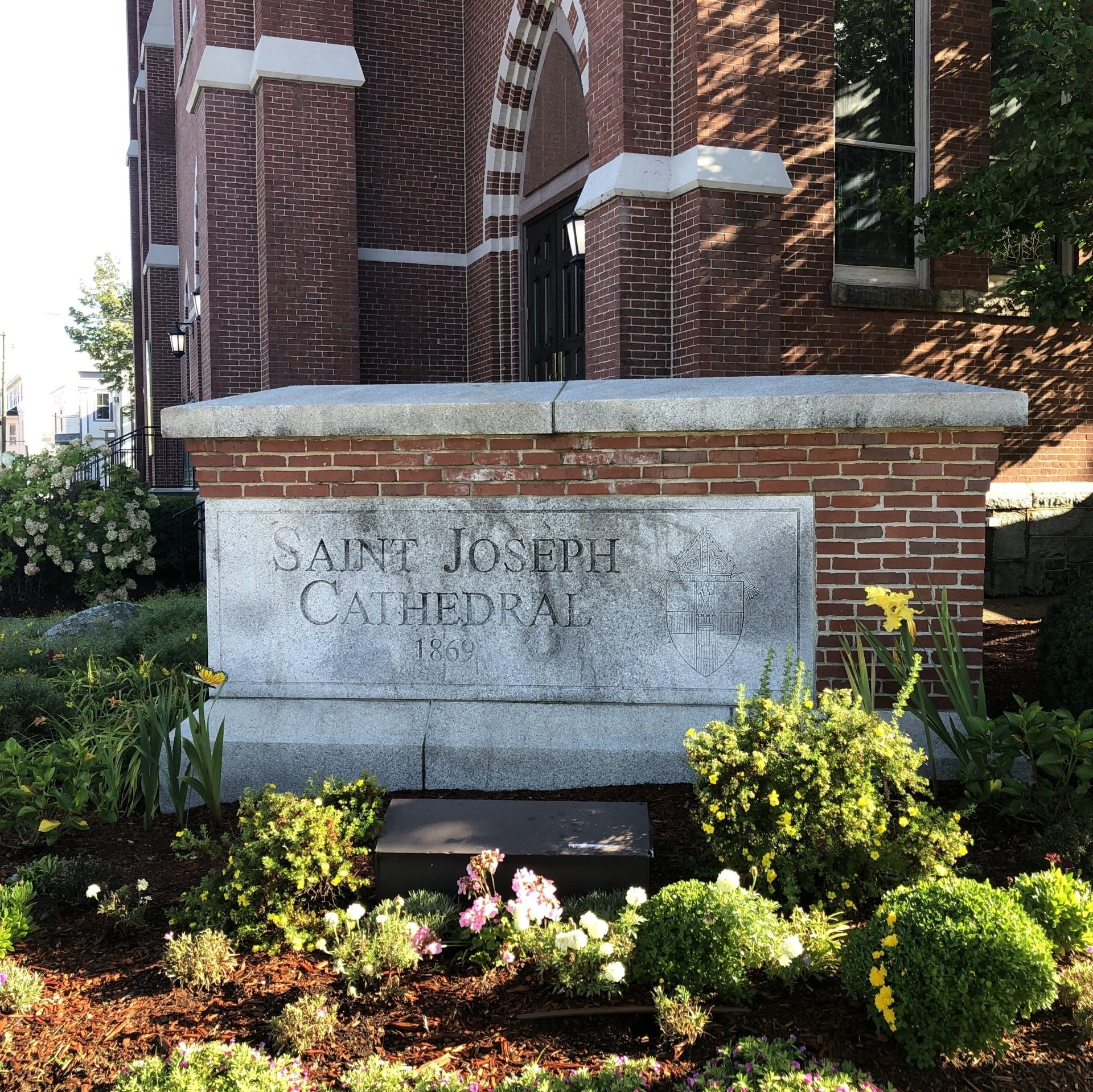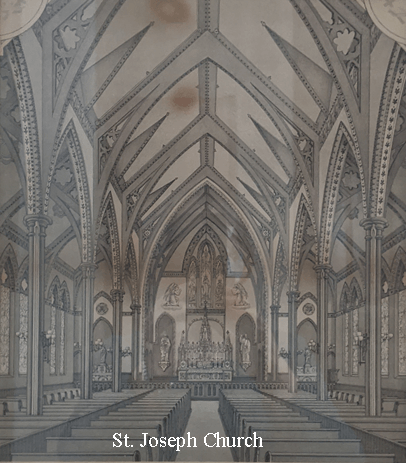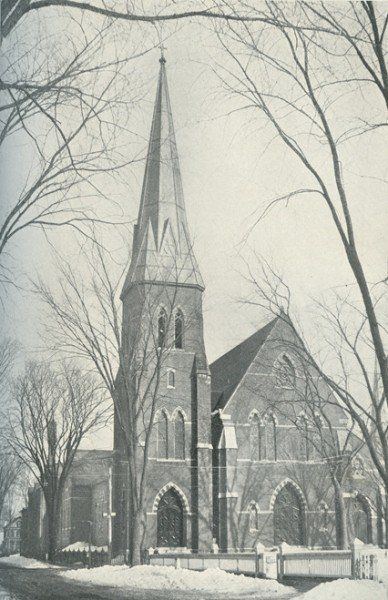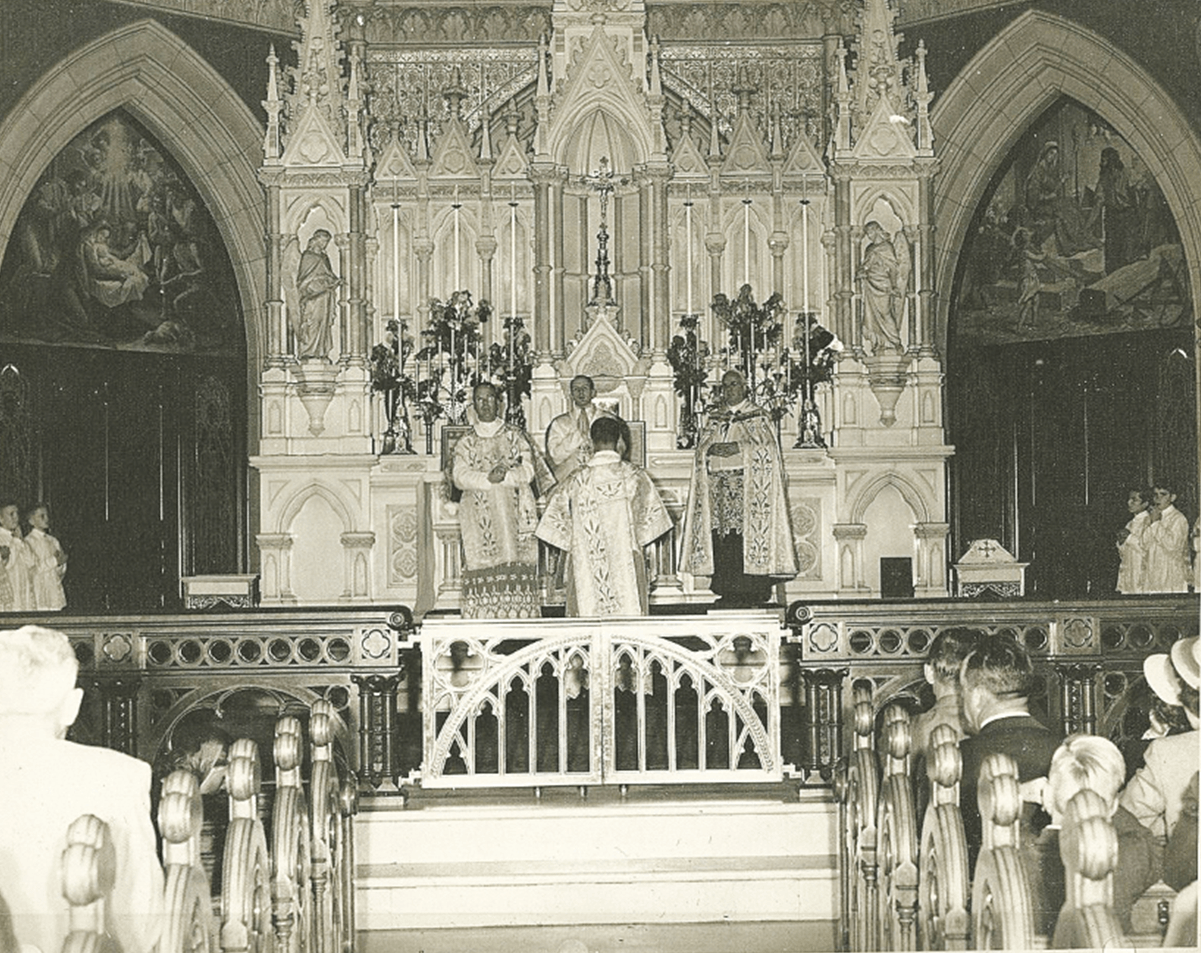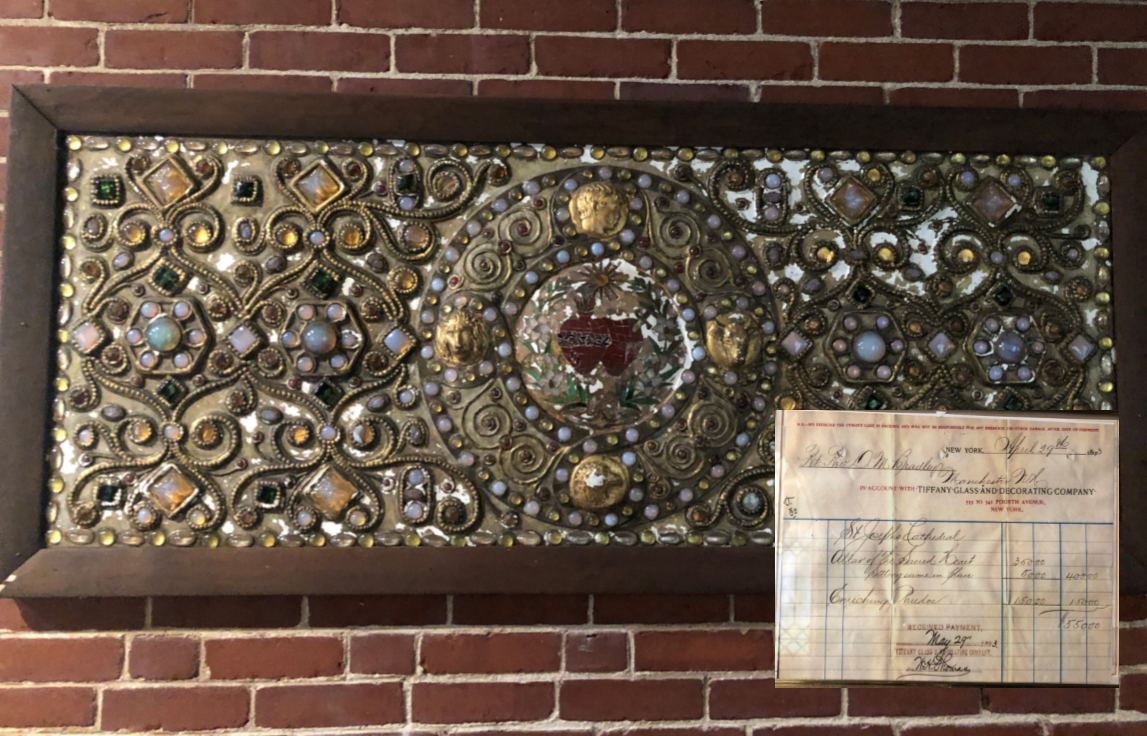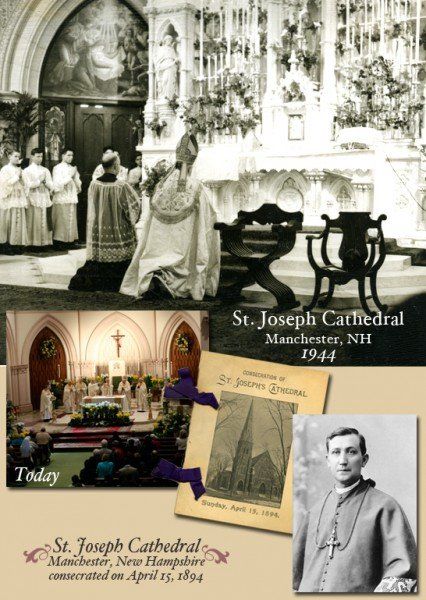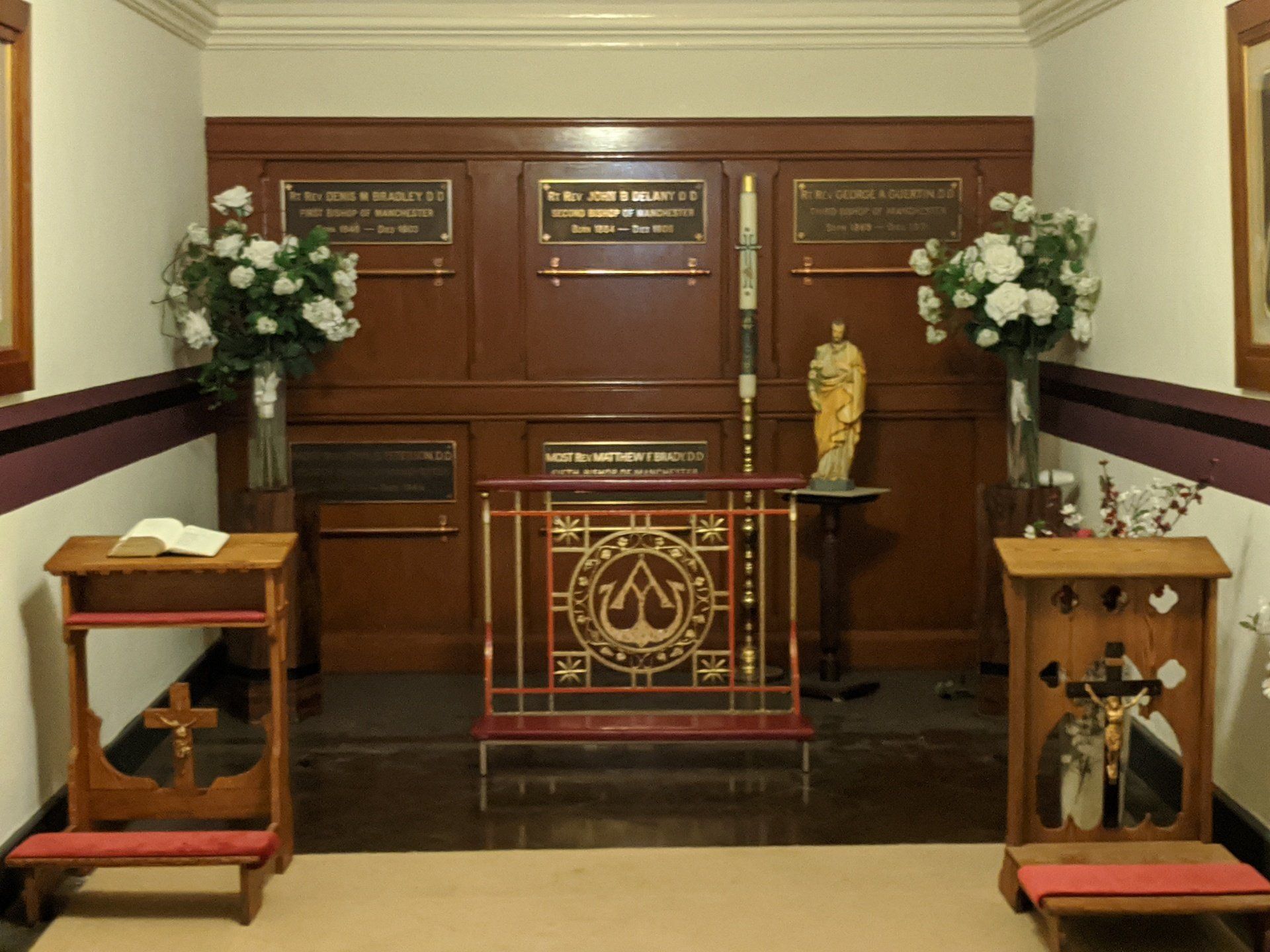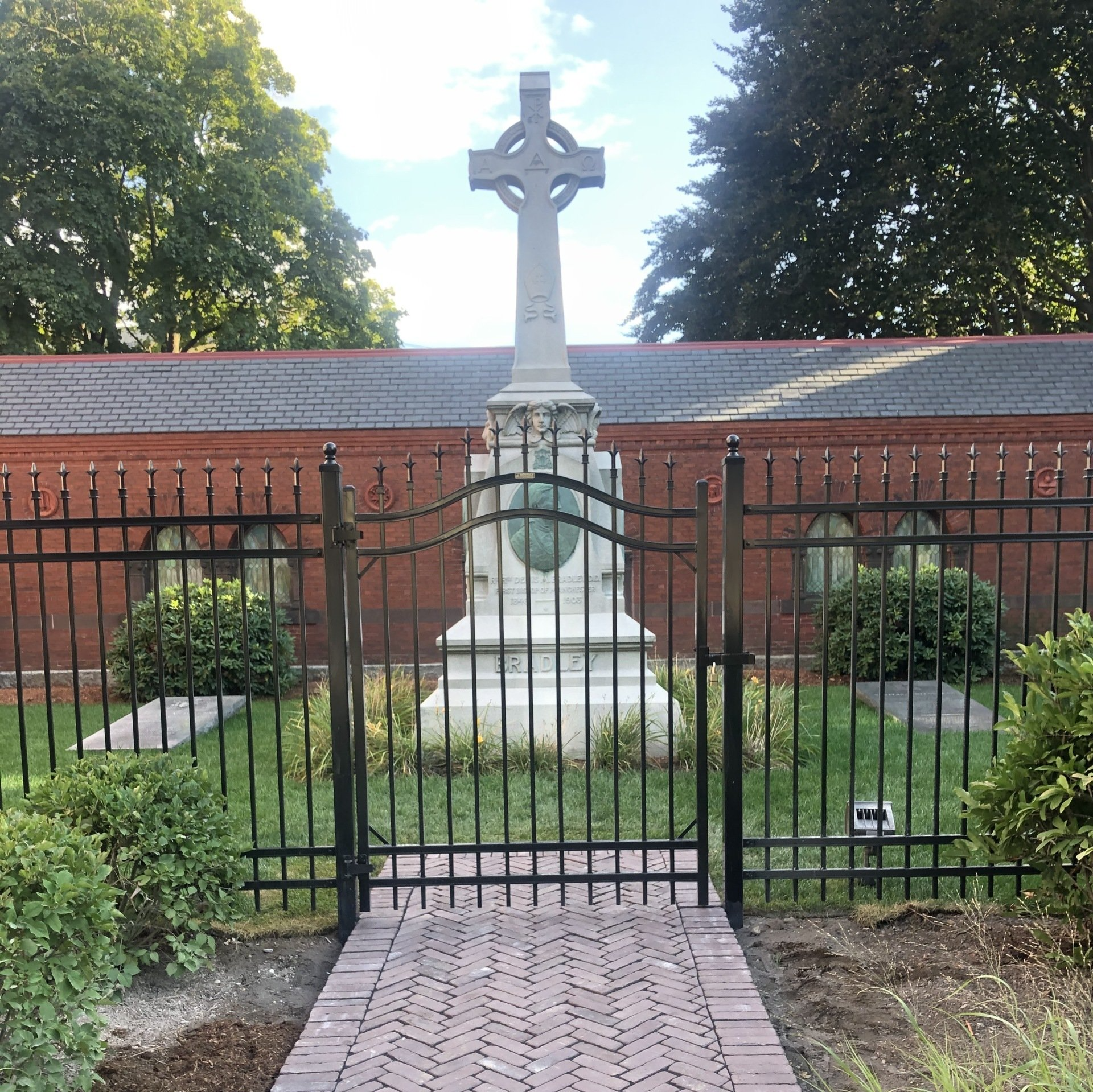History of Saint Joseph Cathedral
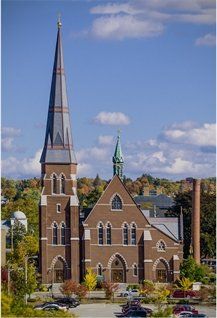
In the Catholic Church, the cathedral stands as both an affirmation and a reflection of the spiritual power which the Church represents among its people, a power embodied in its bishops. It is the place where one expects to find in the bishop the fullness of the priesthood, reflecting environmentally a sense of solemnity and the evocation of the continuity of apostolic succession. The cathedral is also the people's church. There they find a gathering place to which they come as affirmation of the human community they represent.
For more than 150 years, St. Joseph Cathedral has responded to this challenge. It is here at the cathedral that the Bishop of Manchester exercises his teaching and ministerial authority. It is the site of the ordinations of deacons, priests and bishops, and major celebrations such as the Chrism Mass, celebrations of the Jubilees of religious ministering in the diocese, the Rite of Election and the Red Mass.
The Cathedral today is more than 150 years old. Below is a brief history of the building of the Cathedral.
List of Services
-
1862List Item 1
Purchase of land at the corner of Lowell & Pine streets for the purpose of building a church.
The parcel was purchased by Father McDonald of St. Anne's parish for $5,025 and only included the parcel for the church. It did not include the land where the chapel, cemetery, and rectory are located.
-
1866List Item 2
Patrick C. Keely of Brooklyn, NY is chosen to design the church.
The architect was paid $1,500 for his work on Saint Joseph church. Mr. Keely, who was born in Ireland, was well known for his work in designing churches. During the years between 1847 and 1892, Patrick Keely designed 16 Catholic cathedrals and an estimated 500 to 700 other churches. His style is described as "neo - or Victorian Gothic, a decadent adaption of medieval architecture that became widespread in both Europe and America in the 19th century."
-
1867List Item 3
Work begins on the new church.
Total cost for the building the church, as recorded by Father McDonald, was $56,498.81. The largest expenses were attributed to $21,443.54 paid to the carpenter (Alpheus Gay) and $16,846.79 paid to the mason (H. Dickey). Other notable expenses included 3 wooden altars for $1,097 and payment on the organ for $3,000. Much of the work in building the church was done by the parishioners who, after finishing work in the mills, contributed their services to building the church. They came directly from the mill and their children brought their supper so that they could work in the daylight.
-
April 18, 1869List Item 4
Saint Jospeh Church is dedicated by Rt. Rev. J.J. Williams, archbishop of Boston.
Rev. John O'Brien is appointed as the first Pastor.
The Manchester Daily Union reported that the church was filled to capacity (between 1700-1800 people) and the grand organ sounded the introduction of Mozart's Twelfth Mass. The homily was preached by Bishop Bacon of Portland - the text being from the 42nd Psalm, "I will go to the altar of God, to God who giveth joy to my youth."
-
June 1880
Reverend. Denis M. Bradley is appointed as Pastor of Saint Joseph Church.
As pastor, Fr. Bradley completed and opened the St. Joseph School for boys and enlarged the girls' school. Fr. Bradley took an active interest in the financial matters of the parish. Three months after his arrival, he held a fair which realized a profit of almost $5,000.
-
April 15, 1884
Formation of the Diocese of Manchester; Saint Joseph Church is selected as the Cathedral of the Diocese. Father Bradley is chosen as the first bishop.
-
June 11, 1884
Denis M. Bradley is consecrated as the first bishop of the Diocese of Manchester.
At the age of 38, Bishop Bradley was the youngest bishop in the United States. The ordination was attended by the Most Rev. John J Williams, Archbishop of Boston and the consecrating prelate, four additional bishops and 180 priests.
-
1885
Construction begins of the present rectory building.
Among the first works demanding Bishop Bradley's attention was the parish property. On the property where the chapel and cemetery now reside was originally a privately owned house. The property was purchased in 1885 and the house was moved to Amherst Street as part of the Sacred Heart Hospital. The existing rectory (what is now the Library) was relocated to the southwest corner of the lot, and construction began on the new rectory.
-
1892
Construction begins to enlargen the Cathedral.
At the time that Saint Joseph Church became a Cathedral, it soon proved to be inadequate and plans were made to enlarge it. The present sanctuary was built, the sacristy area was added and the Chapel constructed. The original stained glass windows were removed and replaced with the present windows (two of the original windows remain in the Chapel). New altars and pews were added. The burial vault for Bishops of the Diocese was built under the high altar. The work cost $100,000.
The stained glass windows, all donated, were installed for the consecration in 1894. They were crafted in Innsbruck, Austria, by the firm of Tiroler Glazmalerei. The subjects for the windows and their placement were determined by Bishop Bradley.
-
April 15, 1894
Saint Joseph Church is consecrated as Saint Joseph Cathedral by Bishop Bradley.
Archbishop John J. Williams of Boston celebrates the Solemn Pontificat Mass.
The ceremony of consecration was performed by Bishop Bradley and assisted by several priests including Father George Guertin, later to be appointed third bishop of the diocese, who acted as chanter and cross bearer. Bishop Bradley's aged mother attended the ceremony.
Read the article from the April 16, 1894 edition of the Manchester American HERE
-
December 13, 1903
Death of Bishop Bradley.
-
September 8. 1904
John B. Delaney is consecrated as the second bishop of the Diocese of Manchester.
The monument honoring the bishops of the diocese which stands in the Cathedral Cemetery was erected by Bishop Delany. One of Bishop Bradley's last requests was that his successor would erect this monument to remind the faithful that they should pray for their bishops.
-
1969
The church is adapted to the many changes of the Liturgical Constitution of Vatican II.
Want to learn more about the Cathedral history?
Read a history of the early formation of the parish written by Msgr. Edwin Francoeur (Pastor of the Cathedral Parish 1975-1984)
Read the April 16, 1894 article from the Manchester American describing the "Most eminent Catholic event ever witnessed in this city."
Read more about Patrick Keely.
Read more about the restorations being done today and how you can help.
The Bishops of Manchester
List of Services
-
+ Denis Mary BradleyList Item 1
Born: February 25, 1846
Ordained a priest: June 3, 1871
Ordained Bishop of Manchester: June 11, 1884
Died: December 13, 1903
-
+ John Bernard Dalany (Delaney)List Item 2
Born: August 9, 1864
Ordained a priest: May 23, 1891
Ordained Bishop of Manchester: September 8, 1904
Died: June 11, 1906
-
+ George Albert GuertinList Item 3
Born: February 17, 1869
Ordained a priest: December 17, 1892
Ordained Bishop of Manchester: March 19, 1907
Died: August 6, 1931
-
+ John Bertram PetersonList Item 4
Born: July 15, 1871
Ordained a priest: September 15, 1899
Ordained Bishop of Manchester: July 14, 1932
Died: March 15, 1944
-
+Matthew Francis Brady
Born: January 15, 1893
Ordained a priest: June 10, 1916
Appointed bishop: November 11, 1944
Died: September 20, 1959
-
+ Ernest John Primeau
Born: September 17, 1909
Ordained a priest: April 7, 1934
Ordained Bishop of Manchester: February 25, 1960
Resigned January 30, 1974
Died: June 15, 1989
-
+ Odore Joseph Gendron
Born: September 13, 1921
Ordained a priest: May 31, 1947
Ordained Bishop of Manchester: February 3, 1975
Resigned: June 12, 1990
Died: October 16, 2020
-
+ Leo Edward O'Neil
Born: January 31, 1928
Ordained a priest: June 4, 1955
Ordained Bishop of Manchester: June 12, 1990
Died: November 30, 1997
-
+ John Brendan McCormack
Born: August 12, 1935
Ordained a priest: February 2, 1960
Ordained Bishop of Manchester: July 21, 1998
Retired: September 19, 2011
Died: September 21, 2021
-
Peter Anthony Libasci
Born: November 9, 1951
Ordained a priest: April 1, 1978
Ordained Bishop of Manchester: September 19, 2011
